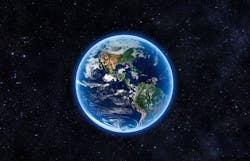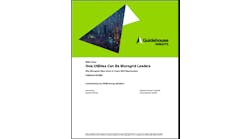Henk Rogers sold his computer game company in 2005 for a sizable sum. But he had little time to celebrate. Within one month he found himself in the back of an ambulance with a 100% arterial blockage to the heart, a condition also known as a “widow maker.”
This is not how energy companies usually begin. But that moment marked the start of Blue Planet Energy, a Hawaii-based energy storage and microgrid company — and led to the even more far-reaching climate ambitions Rogers is now undertaking.
But going back to the ambulance … “If I hadn’t been within 10 minutes of a major angioplasty facility, I would have died that day. The ambulance drivers didn’t think I was going to make it. And so, as I was lying in the back of this ambulance, the first thing I said to myself was, ‘You’ve got to be kidding! I haven’t spent any of the money,’” said Rogers, who was then in his early 50s.
His second thought was that he wasn’t going to let himself die. He had things to do. He had made enough money to take care of his family. Now he wanted time to serve a larger purpose.
During his recovery, that cause became apparent to him when he read a newspaper article about coral reefs disappearing because of ocean acidification related to carbon dioxide.
Mission 1: End use of carbon-based fuels
“So I said, ‘Ok, mission number one, end use of carbon dioxide-based fuels,” Rogers recalled.
And that’s what he’s been working on ever since.
Rogers began by forming the Blue Planet Foundation, a nonprofit organization that became instrumental in the campaign to make Hawaii, his home state, the first US state to set a mandate for 100% renewable energy.
“I believe that in order for me to ask people to clean their room, I first have to clean my own room,” he said.
Like many founders, he started with an idea that he wasn’t exactly sure how to make a reality.
He considered a concert to raise awareness about climate change and was talking with Paul McCartney’s handlers to bring him to the stage in Hawaii. But he began to doubt the project would be worth the work it would require. He feared people would ultimately remember only the concert and not the cause. Then Al Gore decided to launch his Live Earth concert in 2007, which would have made the Hawaii concert duplicative.
So, instead, he turned to “action-oriented” activities, including lobbying Hawaii’s legislators to set a 100% renewable energy goal. That campaign found success in 2015 when the state passed a law mandating that 100% of the state’s electricity come from renewables by 2045. Today, a dozen states have followed suit with similar goals.
The foundation also pushed for solar rebates and changes to the utility model in Hawaii, efforts that made solar more affordable and available.
“So there was a boom in solar companies in Hawaii. Everybody was doing it all of a sudden. We thought we were going to have 30 MW of rooftop solar in a couple of years. It turned out that in a couple of years we had 300 MW of rooftop solar,” he said.
That was great until it wasn’t. The island utility began to raise concerns about grid stability and paused approvals of solar interconnections to the grid.
“I said, ‘Oh my God. This whole solar wave is going to come to a screeching halt. What can we do?’”
Mission 2: Electric backup
So Rogers decided to try solar without a grid connection. He took his 28-acre ranch — an executive retreat — off the grid and tested out redox flow batteries. But that turned out to be “a disaster,” when the Canadian company that provided the batteries was bought by the Chinese, “and we never heard from them again.”
He told his researchers he wanted a new battery, one that was more environmentally friendly and that he could still count on in 20 years. The researchers came upon ferrous phosphate batteries, which he installed at his ranch and home. Soon others started asking him for help going off grid.
“Then I realized that it was starting to turn into a business, so I spun it off,” Rogers said.
That marked the start of Blue Planet Energy, a company that specializes in a stackable battery called the Blue Ion HI energy system.
Another one of Blue Planet’s projects, the Shungnak microgrid in Alaska, was a finalist for the Microgrid 2022 Greater Good Award, and was undertaken in partnership with Ageto Energy, Alaska Village Electric Cooperative, Alaska Native Renewable Industries, Launch Alaska, Northwest Arctic Native Association, NW Arctic Borough and Daylight Energy Services.
Before the microgrid was installed, the village relied on generators run with diesel, which was expensive, polluting and had to be transported across an ice road. Shungnak residents were constantly trying to keep the generators running. Help was hours away.
As for what’s next at Blue Planet Energy, Rogers sees software development as the industry’s next big challenge.
“My background is software and, frankly speaking, all of the software in the industry is way too complicated. When we send people to do an install, the installer actually has to figure out how to talk to the firmware in the inverter, which is insane. That is a level of expertise that no installer needs to have,” he said. “Solar installation, battery storage … should all be plug and play.”
Mission 3: Planet backup
But in his ongoing mission, Rogers isn’t just focusing on the blue planet anymore. He is now casting his gaze out further — a lot further. He has founded the International Moon Base Alliance, an organization that is trying to address a fundamental problem faced by life on earth – the planet has no redundancy.
So the organization’s mission, as Rogers describes it, is to bring Mother Nature to another planet.
“All of this stuff that we’re doing now, that Elon Musk is doing, and Jeff Bezos — people say, why are you working on that when we have to fix this planet?” Rogers said. “The answer is we have to do both.”
If you liked this article, subscribe to the free Microgrid Knowledge Newsletter.







